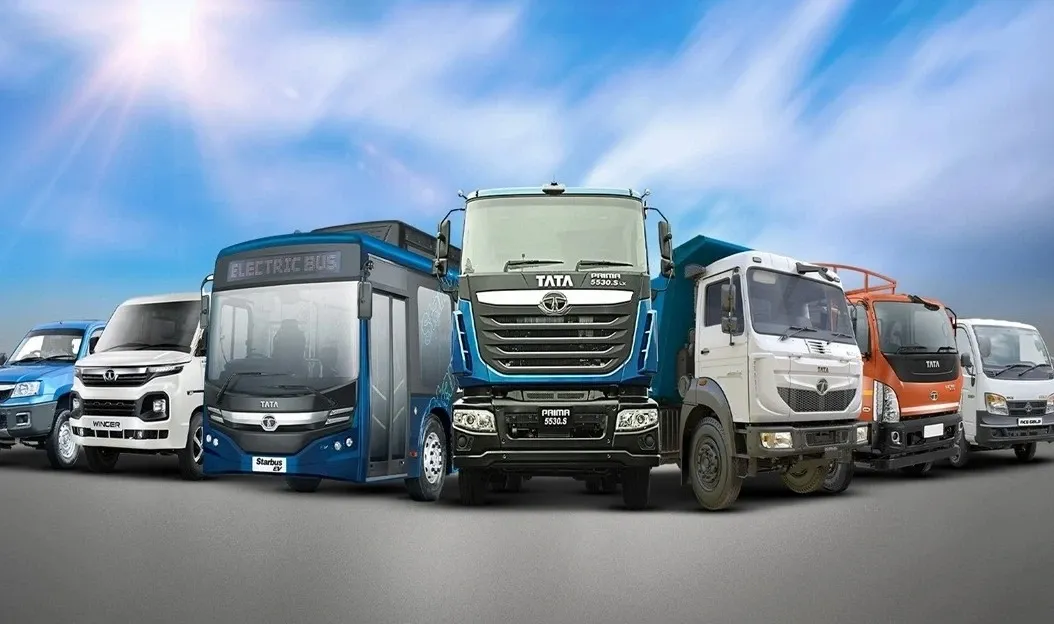Market News
Tata Motors PV shares trim losses after tumbling 7% on weak JLR's numbers, sharp cut in EBIT margin guidance; here is what experts say
.png)
6 min read | Updated on November 17, 2025, 15:57 IST
SUMMARY
Tata Motors Passenger Vehicles: Analysts tracking the business, as per news reports, have termed the September quarter numbers as one of the company's "worst financial performances in recent times".
Stock list

On the JLR front, Tata Motors PV said revenues were impacted by the cyber incident. | Image: Shutterstock
The stock took a hit after the company posted a weak set of numbers for the quarter gone by, owing to a dismal showing by its flagship arm, Jaguar Land Rover (JLR).
However, the stock saw some recovery as the trade progressed. At the close, shares stood at ₹372.65 apiece on the NSE, down 4.74%.
Analysts tracking the business, as per news reports, have termed the September quarter numbers as one of the company's "worst financial performances in recent times".
Analysts further noted that the management expects PV ICE profitability to remain muted for one more quarter due to continued pricing pressure led by competitive intensity and commodity inflation before improving in Q4, driven by the Sierra launch and also the expectation of price hikes w.e.f. January 2026.
PV ICE stands for PV ICE (Passenger Vehicle Internal Combustion Engine).
On the back of the positive sentiment in the market, management expects the PV industry to post double-digit growth in H2 and thereby end FY26E with mid-single-digit growth.
Meanwhile, shares of Tata Motors (Tata Motors commercial vehicle business) were trading flat with a positive bias at ₹318.10, up 0.16% on the NSE.
Tata Motors PV bottom line in Q2
Tata Motors Passenger Vehicles reported a multifold rise in consolidated net profit at ₹76,248 crore for the second quarter ended September 30, 2025, boosted by profit on disposal of discontinued operations despite a cyber attack at British arm JLR affecting its performance.
The company had posted a consolidated net profit of ₹3,521 crore in the second quarter last fiscal year, TMPVL said in a regulatory filing.
The net profit for the second quarter of this fiscal year includes "a notional profit on disposal of discontinued operations of ₹82,600 crore," it added.
JLR woes
JLR revenue was down by 24.3% to 4.9 billion pounds. All JLR metrics were significantly impacted by the cyber incident, which resulted in EBIT margins of (-) 8.6%, it added.
"It has been a difficult period for the business. However, we are committed to emerging from the cyber incident even stronger," Tata Motors Group CFO PB Balaji said.
With the demerger completed, both JLR and domestic PV businesses are well poised to leverage the significant opportunities provided by this exciting industry, the CFO added.
"The demand situation remains challenging globally, but domestically there are signs of resurgence," Balaji said.
On the JLR front, the company said revenues were impacted by the cyber incident and the planned wind-down of legacy Jaguar models ahead of the launch of the new Jaguar. Loss before tax and exceptional items was 485 million pounds for Q2 FY26.
"JLR has made strong progress in recovering its operations safely and at pace following the cyber incident. In our response, we prioritised client, retailer and supplier systems, and I am pleased to confirm that production of all our luxury brands has resumed," JLR CEO Adrian Mardell said.
JLR expects its investment spend to remain at 18 billion pounds over the five-year period from FY24.
However, it said, "In light of the challenges faced, FY26 guidance has been revised, with EBIT margin in the range of 0-2% and free cash outflow of 2.2 billion pounds to 2.5 billion pounds."
This is huge, as JLR has slashed the EBIT margin sharply to 0-2% from the earlier projection of 5-7%.
JLR Outlook: Two concerns
JLR continues to face significant challenges across its major markets, extending beyond the recent cyber incident. Management has noted that the incident will still have some impact in Q3, although production has stabilised in November after dropping to just 17,000 units in October.
The more pressing concern is the persistent weakness in demand across key regions such as China, the US, and Europe, which is expected to keep VME at elevated levels in the near term. Although the company avoided providing guidance for FY27, management indicated that higher US tariffs and China’s luxury tax are both likely to have a lasting effect on medium-term profitability.
VME stands for Variable Marketing Expense.
What leading analysts say
Jefferies
According to news reports, analysts at Jefferies note that Tata Motors PV reported an EBITDA loss in the September 2025 quarter, dragged down by a cyberattack at JLR. They note that the cyberattack-related disruptions continue in Q3 and should normalise by Q4.
Nevertheless, Jefferies says it sees multiple headwinds for JLR, including increased competition and consumption tax in China, high discounts, and the BEV transition, while its key models are starting to age. "India PV is better placed but is unlikely to offset JLR drag," it added.
Goldman Sachs
GS, news reports said, opined that the Q2 numbers were a miss. "Management expects to lose 30,000 units of production in Q3, vs. a quarterly run rate of around 90,000 units and 20,000 units lost in Q2, due to a cyberattack," it added.
CLSA
CLSA said JLR’s EBIT margin came in at negative 8.6%, versus its estimate of negative 2%, led by the plant shutdown due to the cyberattack, subsequently impacting operating leverage on top of the impact from US tariffs.
Production in September was completely lost, with October output reaching 17k units, and India's PV business EBITDA margin came in at 5.8% (down 40 bps YoY).
However, with GST cuts, TMPV remains confident of strong growth, especially in small-to-mid SUVs. JLR cut its FY26 guidance from a 5-7% EBIT margin to 0-2% and from FCF neutral to negative GBP 2.2-2.5 billion, it added.
Related News
About The Author
Next Story



